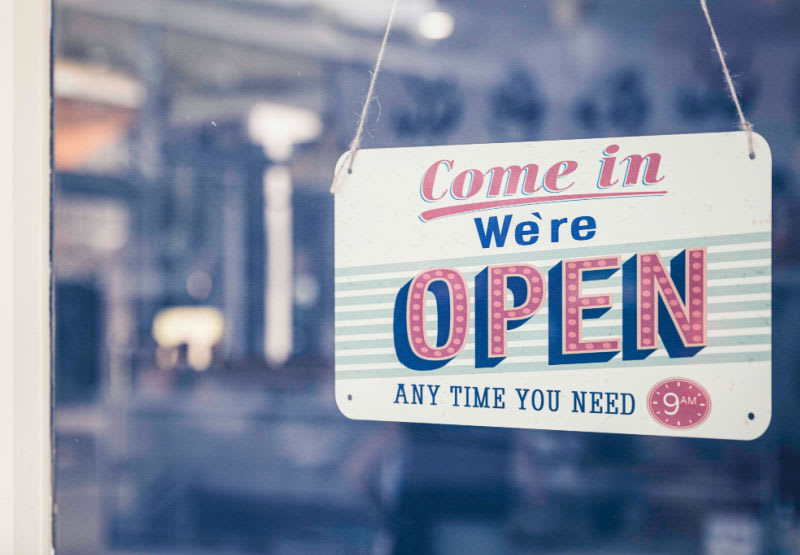15 Restaurant SEO Strategies to Boost Traffic in 2024 (Online and In-Store)
Increase your restaurant’s visibility online and offline by implementing these 15 simple SEO strategies. Learn how to boost local traffic, and gain a competitive edge in the F&B industry
 January 26, 2024
January 26, 2024 9 minute reading
9 minute readingAs a restaurant owner, you’re consistently looking to acquire new customers. But how do you attract new patrons in a booming food industry, with a flood of competitors on the same block?
After experiencing a huge spike in online ordering post-pandemic, restaurants now see that their online presence plays a huge role in gaining a competitive edge.
The first step to customer acquisition is understanding where all your customers start their journey—in most cases, that’s on Google. According to this PYMNTS study, 62% of restaurant customers use Google to search for a restaurant.
“Our data shows restaurants that promote their site through Google receive upwards of 20x more orders than those who don’t promote their site,” Kate Green, vice president of restaurant services and innovation at Grubhub, in an interview with PYMNTS.
If you want to be found easily on a Google SERP (search engine results page), you must implement SEO best practices in your restaurant marketing strategy. This helps your restaurant rank higher to get more eyeballs and clicks.
In this article, you’ll learn how to optimize your website for SEO, improve your small business’s online presence, and connect with potential customers.
Find a professional SEO manager on Fiverr
How does SEO work for restaurants?
A restaurant is a business that needs to be visible to internet users. Like any online business, search engine optimization involves tasks like indexing, on and off-page optimization, and using tools like Google Search Console and Google Analytics.
But the point of SEO for restaurants is to increase your website’s visibility for specific food niches and attract the right local customers.
Google actively takes information from restaurant websites and third-party directories (ex: Yelp, OpenTable, YellowPages, Tripadvisor). To increase your online presence, ensure Google can read and extract information about your business, such as your menu, address, phone number, hours of operation, and other business details.
You can help search engines pull this data using microformatting—lines of HTML code. This structure and process is called Schema Markup.
It provides structure to a block of information, making it easier for search engines to scan and showcase for an online consumer base. We’ll show you how to implement schema markup below.
How to improve your restaurant website ranking
Search engine algorithms favor an authentic, popular, and trustworthy eating place. A restaurant that’s hard to locate through a Google search or barely has reviews may turn away potential customers.
Thankfully, a solid SEO strategy can solve issues or discrepancies with your online presence.
Here’s a checklist to use when you’re creating a good SEO strategy:
Define your USP: Determine what sets you apart from your competitors— your location, ambiance, food, or even history—and highlight these aspects in your content to define your brand's identity. For example, you’re the only pizza joint in the area serving sourdough, authentic cuisine, family-owned recipes, or plant-based dishes.
Analyze competitors: See how your competitors put out content online to see how you can do the same, but better. For example, if they have a blog they sporadically update, then create one with fresh weekly content.
Be up-to-date with local search trends: Leverage ongoing food trends online to build local visibility and reach a broader audience. For example, there’s a TikTok trend featuring a popular food item on your menu, so you join in to build buzz.
Let’s look at the top 15 restaurant SEO tips and strategies to boost traffic.
1. Use Google My Business Q&A
Sixty percent of online consumers use the internet to search for local businesses every week. Your Google My Business Profile is the first thing customers see when they search for your restaurant, so keep it updated and accurate.
Using the Q&A section can also improve your restaurant’s rankings compared to your local competitors. Allowing customers to ask questions and consistently answering them can build trust and foot traffic to your restaurant. You can also Incorporate SEO-friendly content by using location-specific keywords or menu items in your answers.
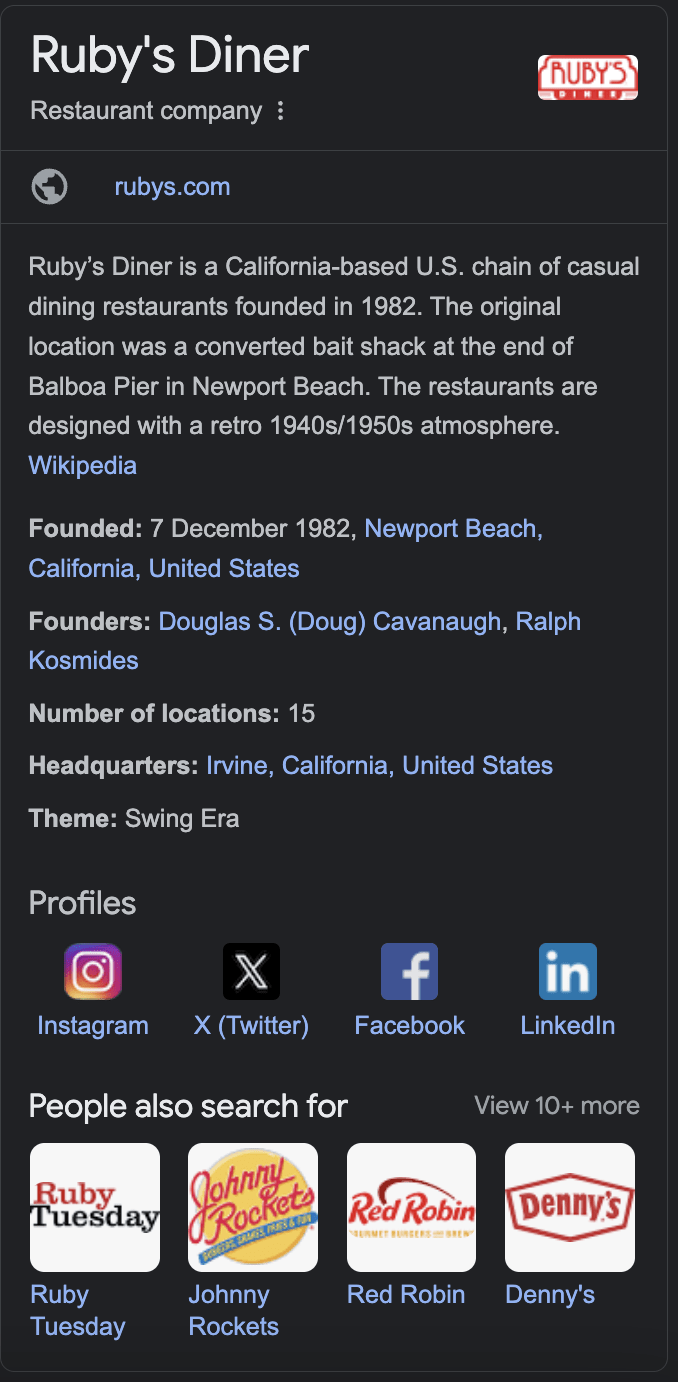
Example of a Google Business Profile
2. Use keywords
Keywords tell Google what your site’s content is about. And keywords are what users type in to find your restaurant. Thorough keyword research is vital to get the right people finding and clicking through to your website. So the keywords you choose should represent your restaurant business and the customers it wishes to attract.
Here are the keyword types to target:
Head term: Main category for your restaurant, such as ‘ice cream parlor’ or ‘bakery’
Semantic Core: Long-form related search terms such as ‘gluten-free’, ‘dairy-free’ or ‘dessert places’
Location Marker: Geographic search terms, like ‘near me’ or whichever city, block or street you are based in
Use-case: Targets search intent (e.g., some keywords are informational only, while others are for those looking to buy soon). For example, ‘best’ or specific like ‘for birthday parties’ show a buy-now intent
Keywords aren’t just limited to title tags—include them in your meta description tags, URLs, and image alt text on a page.
“When I work with restaurants, keyword planning tailored to their location and menu offerings is key,” says Carl Broadbent, SEO Consultant. “An Italian bistro I worked with struggled with foot traffic on weekday lunch shifts. I analyzed its target demographics, and optimized its website/profile for terms like "quick lunch near me" and " quick Italian takeout." Its weekday sales increased 20% within 6 months.”
On Fiverr, you can hire freelance keyword research specialists to build a local SEO strategy for your restaurant.
3. Optimize ‘Near Me’ searches
In an ideal scenario, your establishment should be one of the top results when someone in your area searches for 'best X restaurant near me.’
To optimize for ‘near me’ searches on Google, include location-based keywords in your online platforms to capture local search traffic. This would include the exact district, or block you’re located in.
Even a brand descriptor, such as “Downtown LA’s favorite woodfire pizzas” would perform better than a generic search term like “Wood Fired Pizzas, LA”.
Naturally integrating location specifications in your content can boost your online visibility, so don’t overuse it in your copy.
4. Encourage online reviews
Review sites are trustworthy and help consumers make purchasing decisions. Only 48% of users would consider visiting your restaurant if its rating is below 4 stars.
Leveraging reviews on established platforms, such as Yelp, TripAdvisor, OpenTable, and Yellow Pages can increase your restaurant’s visibility as well.
People reviews are so important that Google launched Local guides, a program to encourage users to leave reviews and contribute to local listings. Here, a local guide can verify your restaurant’s data and even upload images.
However, take charge of your business’s data through Google’s business profile rather than relying on reviews and local guides to build your online presence.
5. Build trustworthy backlinks for your restaurant
According to Ahrefs’s SEO Statistics 2023, the more backlinks a website has, the better its rankings with search engines. Getting backlinks to your website via credible local organizations, influencers or business listing sites could drastically improve your rankings.
When trusted news outlets or influencers promote your restaurant, it’ll increase your site's organic rankings, leading to more conversions.
Remember that there are negative backlinks, too. Having your restaurant featured on ‘scammy’ websites can impact your ratings. Always seek backlinks from authentic sources.
6. Leverage Google Maps SEO
Another great way to compete and stand out against your local businesses is to leverage Google Maps SEO.
To rank high in Google Maps SEO, ensure your NAP (such as the address, phone number, etc) information is consistent and accurate across all platforms.
Secondly, verify your business location and respond to customer queries on Google. These practices make you seem authentic and improve your ranking on Google Maps.
7. Implement Schema Markup for Menus
One of the first things a potential consumer checks is your menu. If your menu isn’t easy to find, or difficult to load on a smartphone, it may hamper the decision-making process.
This is where schema markup comes in.
Most restaurant owners miss the opportunity to apply the same code for their menu items. This is because searches aren't limited to cuisines and specific menu items. Nor are searches limited to ‘Bakery near me.’ They’ve extended to specifications like ‘Gluten-free bakery near me’ or ‘Cafe with vegan options.’
If you have unique items or specials on your menu, highlight it—whether it’s a seasonal strawberry tart, multi-grain cinnamon rolls, or a new holiday special chai latte martini.
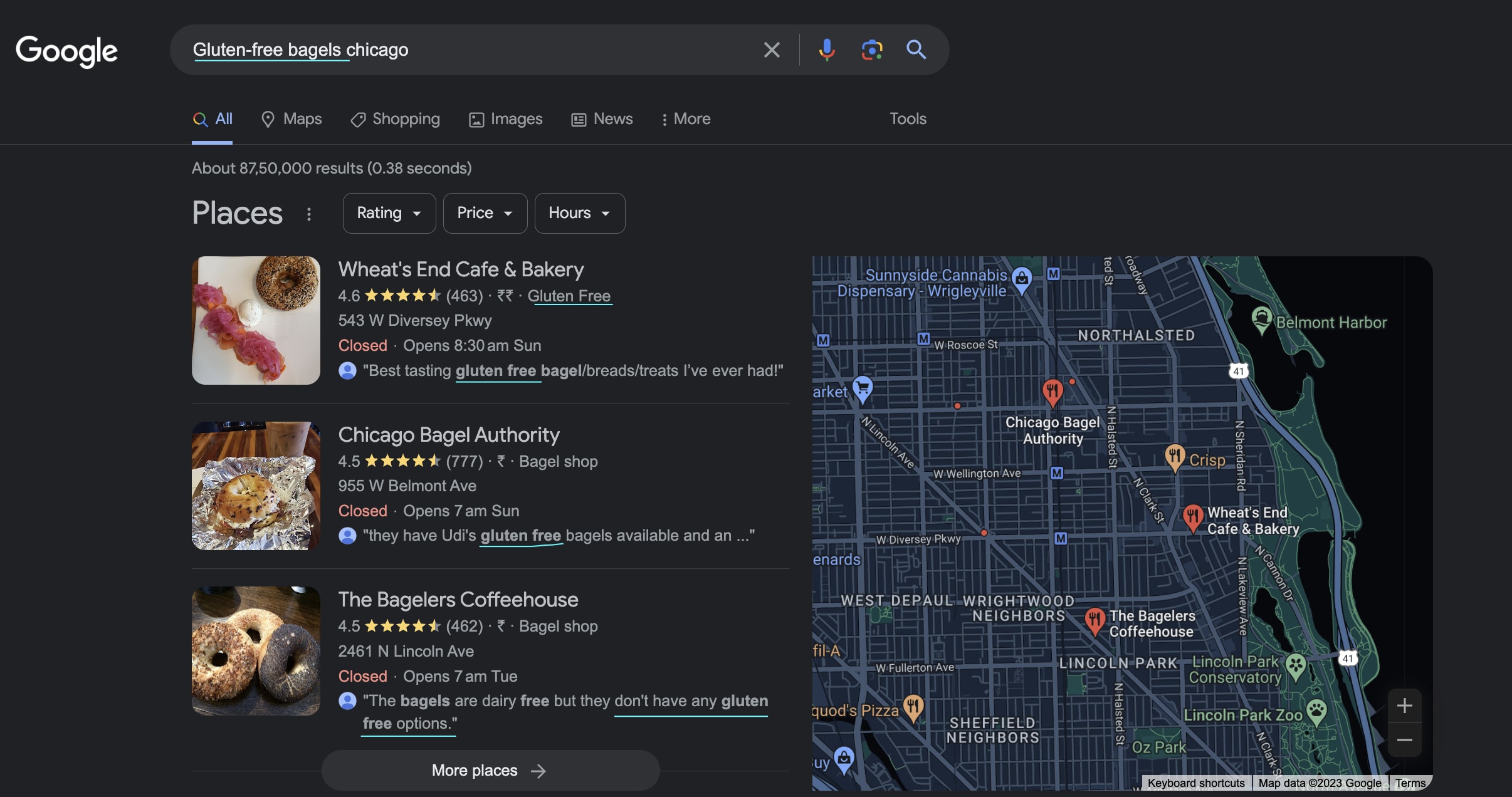
Example of menu items highlighted in search results
Calling out specific menu items helps to implement schema markup, which sets you apart from every other similar restaurants.
8. Enable Mobile Optimization
Odds are, your future customers will find you through their smartphone over any other device. In 2023, 53% of website traffic was from mobile devices.
So why not make a mobile-friendly restaurant website? By implementing a responsive design, you can ensure user satisfaction with a user-friendly interface. This reduces your bounce rate and increases your search rankings since Google considers mobile-friendliness a ranking factor.
Most of your web presence should be mobile-first, which you can adapt to larger screens like iPads and computers. When you adapt designs to a smaller screen, the scrolling increases, and large files, images, or paragraphs become harder to consume. Imagine having to scroll 3-4 times to pass a large image of your restaurant.

Example of bad mobile optimization
When you implement mobile-first design, ensure the ‘mobile version’ contains key business information.
9. Use Location-Specific Landing Pages
If your establishment has multiple branches in different cities or blocks within a city, consider creating a separate and unique landing page for each branch.
A location-specific landing page improves the user experience and helps search engines scan and present your restaurant’s data for a viewer in the same location, increasing your overall visibility.
10. Optimize for Voice Search
As of 2023, 27% of Google searches were voice searches. To optimize for voice-search queries, consider how a person would verbally ask questions when developing your restaurant’s SEO strategy. Voice searches tend to use natural language.
Map out the possible ways a person would verbally speak, then optimize voice search to boost your restaurant's search rankings.
Here are some examples of voice search queries:
“What are some Italian restaurant that serve vegan options”
“Which is the best restaurant for birthday parties”
“Show me pet-friendly cafes near me”
“Which cafes have free Wifi near me”
“Fine Dining restaurants in Detroit open past 12 AM”
With over 1 billion voice searches every month through smartphones and voice assistant devices, voice search optimization is essential to your restaurant SEO strategy.
11. Implement Accelerated Mobile Pages (AMP)
User experience can potentially make or break a customer’s decision.
If customers check your restaurant’s homepage and it doesn’t load quickly, they’ll hit the back button and move on to a competitor. Small steps like improving your website’s loading speed can make a big difference.
With a faster-loading website, you improve the user journey and ensure a higher chance of converting them into new customers. Google also considers AMP as an essential metric for bumping links up in search rankings.
12. Leverage local influencers
Nothing boosts local search visibility more than reviews from influencers and bloggers. You can get influencers to create authentic content by partnering with them.
Not only will your restaurant gain more popularity, but you'll also reduce the stress of consistently churning out high-quality social media and website content. These influencers create content for you and have the engagement and online visibility that your restaurant needs.
This is why partnering with local, micro-influencers could be beneficial and potentially profitable for content creation and increasing brand awareness.
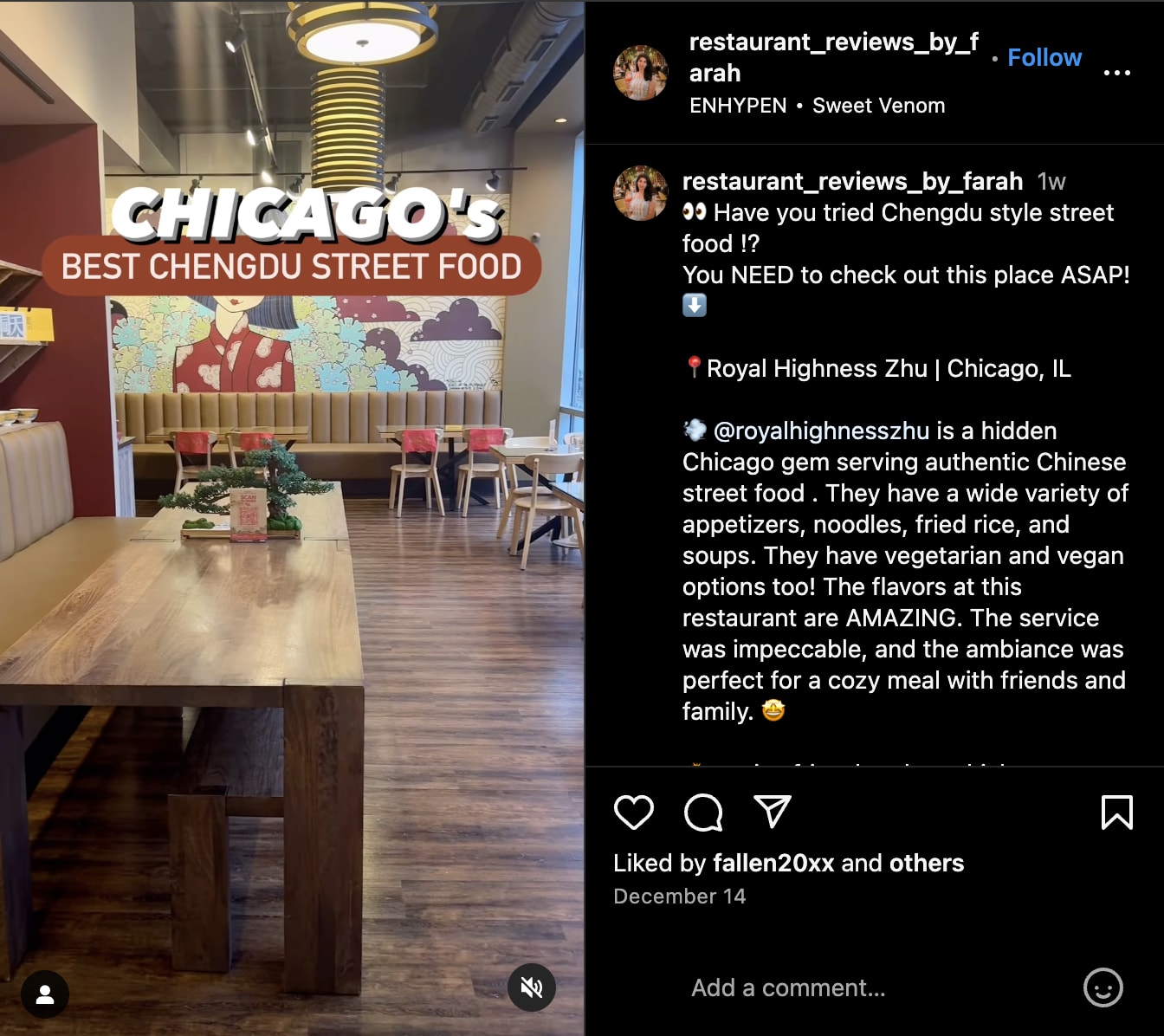
Your restaurant can get organic promotions by food creators on Instagram
13. Level up your video marketing with restaurant tours
Video content has grown popular in marketing strategies as it’s more engaging and highly shareable—automatically increasing your visibility and website click-through rate.
When people click on your link and immediately have a glimpse into your restaurant, they are more likely to book a table and make their decision quickly. You can showcase your restaurant’s ambiance with 360-degree photos and highlight your signature dishes with behind-the-scenes videos across social media platforms.
To make video content production easier, delegate video editing to professional freelance video editors on Fiverr.
14. Stay up to date with social media trends
Similarly, hopping on any trends in your restaurant marketing strategy can help your online visibility. Whether you decide to add unique menu items or follow social media trends, this shift in your strategy can attract food enthusiasts.
For example, consider adding seasonal specials to your menu and promote this online. Restaurants with exclusive menus and offers provide a more unique touch along with creating a sense of urgency that can attract more customers.
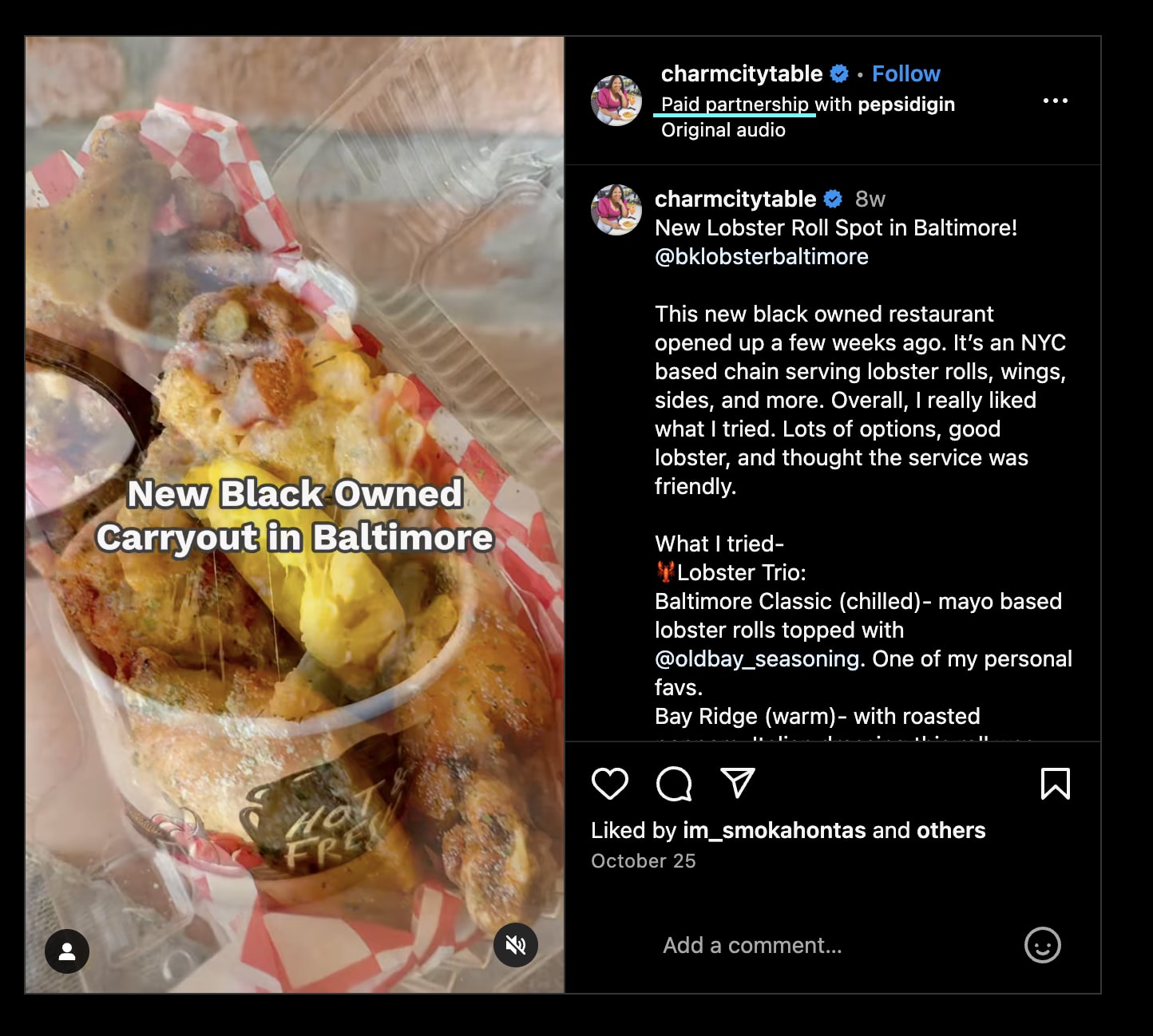
Example of Instagram post. Here is a content creator’s post that follows a social media movement to support black-owned businesses.
15. Partner with other local events and businesses
When you establish a partnership with well-known brands, hotels, or event spaces popular in your locality, you automatically enhance your visibility offline. This promotion can also be an online campaign, where you cross-promote each other and reach new audiences.
This strategy is also a great opportunity for user-generated content. When you organically attract new customers in spaces they love and partner with influencers they follow, you get these consumers to publicize your space for you on online platforms like social media. This only adds to your restaurant's reputation
Hire an SEO Manager for your restaurant today
SEO management is just one piece of the larger digital marketing puzzle. If running your restaurant business leaves you no time to work on marketing, delegating these tasks can be a worthwhile investment.
Find a professional SEO manager on Fiverr
Consider taking tasks off your plate and asking an expert to help you. Hire an SEO manager on Fiverr to understand your restaurant and help you grow by curating a unique SEO marketing strategy.
